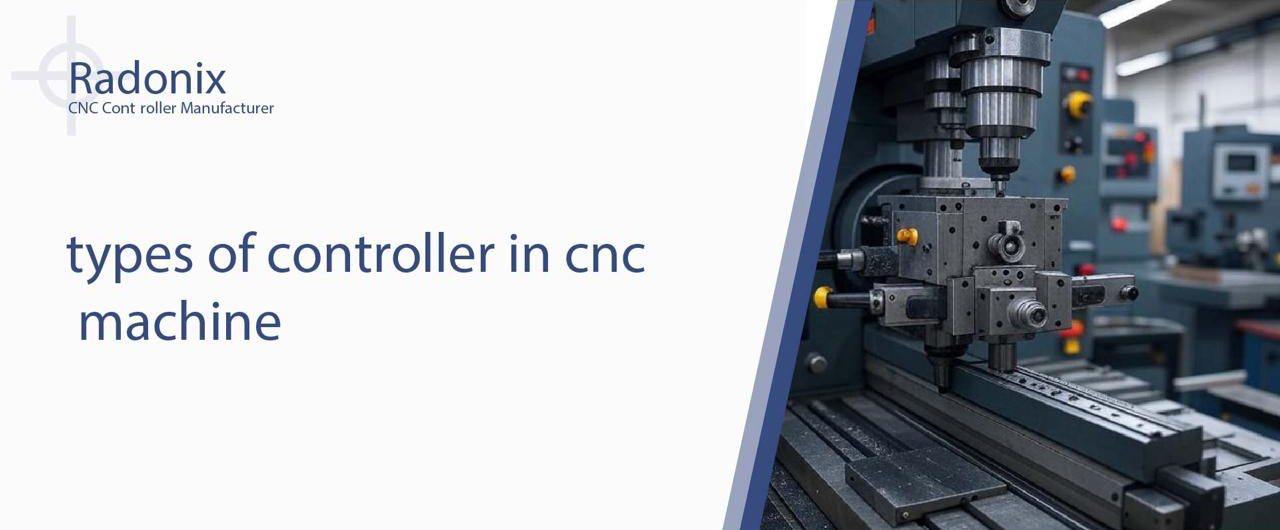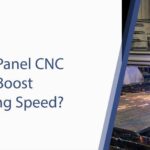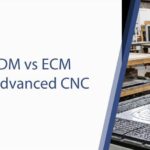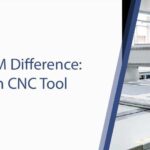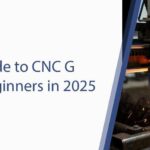In the world of modern manufacturing, the Computer Numerical Control (CNC) machine is the workhorse, a marvel of precision and automation.
But what makes these machines so incredibly accurate and versatile? The answer lies not in the steel frame or the powerful motors, but in the intelligent system that commands them: the CNC controller.
This sophisticated piece of technology acts as the brain of the machine, interpreting a digital program and translating it into the precise physical movements that bring a design to life.
Understanding the different types of controllers in CNC machines is critical for any manufacturer, engineer, or machinist.
The choice of a controller dictates everything from a machine’s speed and accuracy to its flexibility and ease of use.
A controller is more than just a component; it is the core of a machine’s personality and capability. At Radonix, we specialize in providing the advanced control systems that power the future of manufacturing, and we’re here to guide you through the various options available.
This article will explore the main types of controller in CNC machines, break down their characteristics, and provide the insights you need to make an informed decision for your operations.
What is a CNC Controller?
Before we dive into the types of controllers in CNC machines, let’s define its function. A CNC controller is a dedicated computer and software system that directs the operation of a CNC machine.
It performs three primary tasks:
- Program Interpretation: It reads and processes the G-code and M-code programs created by a CAM (Computer-Aided Manufacturing) software.
- Motion Control: It translates the G-code’s commands (e.g., “move to X=10, Y=20”) into precise electrical signals that drive the machine’s servo or stepper motors.
- Machine Management: It manages all other machine functions, including spindle speed, tool changes, coolant flow, and safety features.
In essence, the controller is the command center, ensuring that every movement is executed with perfect timing and accuracy.
The Main Types of Controllers in CNC Machines
CNC controllers can be broadly categorized into three main types, each with its own architecture, advantages, and ideal applications.
1. Stand-Alone / Traditional Controllers
These are what many people think of when they picture a CNC machine controller. They are proprietary systems with closed architecture, meaning the hardware and software are designed to work exclusively with each other. Famous examples include FANUC, Siemens Sinumerik, and Heidenhain.
Characteristics:
- Dedicated Hardware: They use their own specialized hardware and an embedded, real-time operating system.
- Closed Architecture: The user has limited access to the core software, and customization is typically restricted to parameter changes.
- Physical Interface: They usually feature a dedicated physical control panel with buttons, a keyboard, and a screen.
Advantages:
- Exceptional Reliability: Traditional controllers are known for their robustness and long-term stability in harsh industrial environments.
- Industry Standard: They have a long history and are widely supported by machine builders and service technicians worldwide.
- Proven Performance: Their motion control algorithms are highly refined, delivering consistent and accurate results.
Disadvantages:
- High Cost: They can be significantly more expensive than other options, both for the initial purchase and for any proprietary software upgrades.
- Limited Flexibility: It’s difficult to integrate them with third-party software or to customize the interface beyond what the manufacturer allows.
- Steep Learning Curve: Their programming languages and interfaces can sometimes be less intuitive for new users.
This type of controller is a good choice for businesses that value reliability and are using well-established, standardized machining processes.
2. PC-Based Controllers
A PC-based controller utilizes a standard personal computer (PC), often with a real-time operating system (RTOS), combined with specialized motion control hardware. The PC handles the Human-Machine Interface (HMI) and program management, while the dedicated hardware card takes care of the real-time motion control.
Characteristics:
- Standardized Hardware: They run on a standard, often ruggedized, industrial PC.
- Open Software: The interface is typically based on Windows or Linux, making it familiar and user-friendly.
- Modular: The motion control hardware is separate from the PC, allowing for more flexibility in configuration.
Advantages:
- Affordability: They are generally more cost-effective than traditional controllers.
- Superior HMI: The user interface is often more graphical, intuitive, and customizable. It can also run other software (e.g., CAD/CAM viewers) directly on the machine.
- Enhanced Connectivity: They can easily connect to a factory network, opening the door for seamless integration with other systems and Industry 4.0 applications.
Disadvantages:
- Potential for Instability: While a real-time OS mitigates this, a PC-based system can, in theory, be more susceptible to software glitches or viruses than a closed-architecture system.
- Requires Expertise: Setting up and maintaining the system can sometimes require a higher level of technical knowledge.
PC-based controllers are perfect for companies that need flexibility, advanced HMI features, and seamless network connectivity.
3. Open-Architecture Controllers
An open-architecture controller is a modern and highly customizable approach that is built on the philosophy of open standards and interoperability. It can be a hybrid of different hardware and software components from multiple vendors, giving the user unprecedented control over their system.
Characteristics:
- Customizable: Every aspect of the controller, from the operating system to the HMI and motion control algorithms, can be tailored to specific needs.
- Vendor-Independent: It allows a company to choose the best components for their needs, rather than being locked into a single supplier.
- Highly Scalable: The system can be easily upgraded with new hardware or software as technology evolves.
Advantages:
- Ultimate Flexibility: It allows for custom applications, unique HMI designs, and easy integration with new sensors or robotics.
- Lower Total Cost of Ownership: The ability to choose components from various vendors can reduce costs, and the open nature of the system avoids proprietary upgrade fees.
- Future-Proofing: An open system can be easily updated with new technologies, protecting the initial investment.
Disadvantages:
- Requires Technical Know-How: This system demands a high level of technical expertise to design, implement, and maintain.
- Integration Challenges: While flexible, it requires more effort to ensure all components from different vendors work together seamlessly.
Open-architecture controllers are the choice for businesses with specialized needs, in-house technical talent, or those building custom machinery.
Key Features to Look for in a CNC Controller
Regardless of the specific type, a high-quality CNC controller should possess several key features that are essential for modern manufacturing.
- High-Speed Processing: The controller must be able to process G-code programs quickly, especially for complex 3D parts, to prevent “jerky” movements and ensure a smooth surface finish.
- Intuitive HMI: A well-designed user interface (HMI) is crucial for a positive operator experience. It should provide clear data visualization, simple navigation, and a user-friendly layout.
- Robust Motion Control: The controller’s motion kernel must be capable of precise, real-time control of the machine’s axes, with advanced features like look-ahead and interpolation to create smooth tool paths.
- Connectivity and Communication: A modern controller should support standard communication protocols (e.g., Ethernet/IP, PROFINET) to integrate with a factory network for data monitoring and remote diagnostics.
- Safety Features: Built-in safety protocols, such as emergency stop (E-stop) circuits and tool path validation, are essential for protecting the operator and the machine.
The Radonix Advantage: Your Partner in CNC Control
Choosing the right controller is arguably the most important decision when acquiring or upgrading a CNC machine. It’s the difference between a tool and a powerful, intelligent system.
At Radonix, we specialize in providing advanced CNC control systems that are both robust and flexible. We combine the reliability of traditional systems with the user-friendliness and connectivity of modern, open-architecture platforms.
Our solutions are designed to empower manufacturers by providing:
- Superior Motion Control: Our systems are built with high-performance motion kernels that deliver exceptional speed, accuracy, and surface finish.
- Customizable HMI: We provide a powerful, user-friendly HMI that can be tailored to your specific application, making complex tasks intuitive and easy to manage.
- Seamless IIoT Integration: Our controllers are designed to be part of the smart factory, with built-in connectivity for real-time data monitoring and remote diagnostics.
Whether you’re building a new machine or retrofitting an old one, the choice of a controller will define your success. With the right technology, your CNC machine can achieve new levels of performance and efficiency.
Ready to explore the next generation of CNC control? Contact Radonix today to learn how our solutions can help you select the perfect system for your needs.
Contact Us:
- E-Mail: info@radonix.com
- Phone: +90 (553) 920 5500

